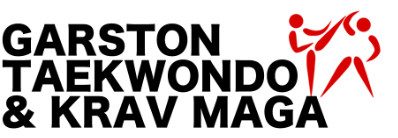Il Jang (Pattern 1)
The heavens give us rain, and light makes all things grow. Therefore, keon is the beginning of everything on Earth and the source of its creation. Accordingly, these pattern sets begin with keon, namely “the heavens”. As a student, you are urged to consider this concept as you perform this first form, and allow it to influence the styling of your movements.
Ee Jang (Pattern 2)
Tae is a spiritually uplifting nature, but is not aggressive. It is serene and gentle instead. In compliance with these characteristics then, the actions of this form should be performed with ease and fluidity; without the sense of struggling against your limitations, but nevertheless, living fully within them.
Sarm Jang (Pattern 3)
The sam jang’s actions, accordingly, should be performed with variety and passion. Actions of hands, feet, and body are successively used in defence. These actions help us attain briskness when we execute attacks. The movements associated with this form demand a variety of quickness and strength.
Sa Jang (Pattern 4)
Because Tae Kwon Do is comprised exclusively of virtuous actions, these patterns express fear and trembling in the only way that virtue allows — stoically, as a passing thunderstorm which nourishes the soul. Virtue, therefore, defines fear as courage.
This form, as a consequence, contains many postures that display composure and strong balance such as blocks in combination with strikes, and front kicks that require the performer to kick with force but immediately recover into a back stance.
Oh Jang (Pattern 5)
Seon encompasses the characteristics of wind: gentle and strong; yielding and penetrating; soothing and destructive; invisible, yet manifesting.The concept of seon is of a subtle nature, but pure, without evil intent; it isa state of being, the state of being like wind. While there are such violent winds as typhoons, hurricanes and tornadoes, the nature of wind is gentle. Seon symbolizes the humble state of mind.
It expresses repetitive good-natured actions. Actions proceed sometimes gently and monotonously as breeze, but sometimes as forcefully as storms. These differing manifestations of one essence must be balanced throughout the actions of this poomse.
Yuk Jang (Pattern 6)
This set of movements must be performed with fluidity, and the feeling that every action is exactly what is called for to overcome the situation at each particular instant. Actions of this pattern resemble the nature of water,such as the passing over of disconnection through kicking.
Chil Jang (Pattern 7)
The stability of the mountain is defined as the structural soundness which results from having resolved one’s ambition to touch heaven in the limitation of excellent form. This resolution is of a noble and majestic character; thus, the image of the mountain.
The tiger stance (beom-seogi), in which most of our weight is settledon the back leg, expresses this peculiar stability which also contains ambition and allows for freedom of movement.
Pal Jang (Pattern 8)
This pal jang is the gup-holder’s last round of training, and a steppingstone to the way of a dan-holder. Here you review fundamental actions and concepts found in the previous forms. This is the platform from which the more advanced patterns can be studied.



